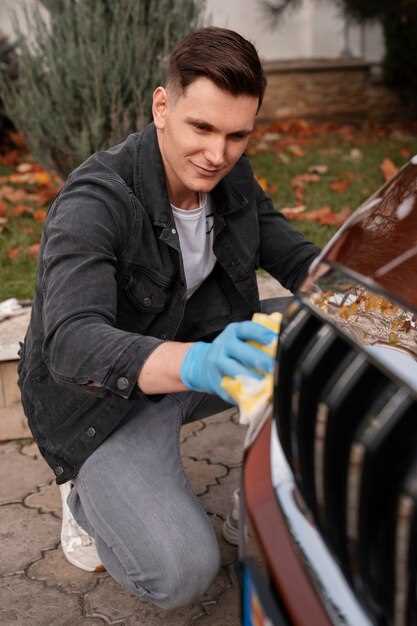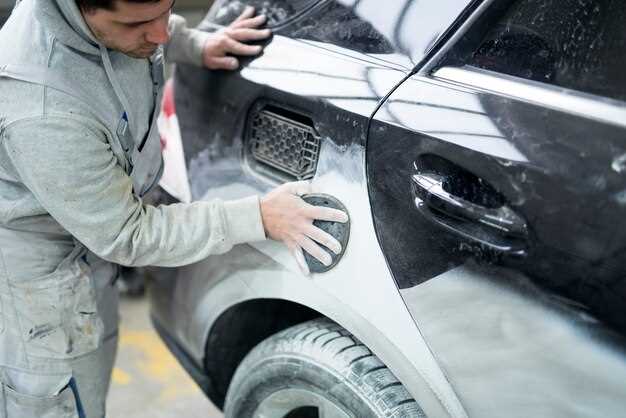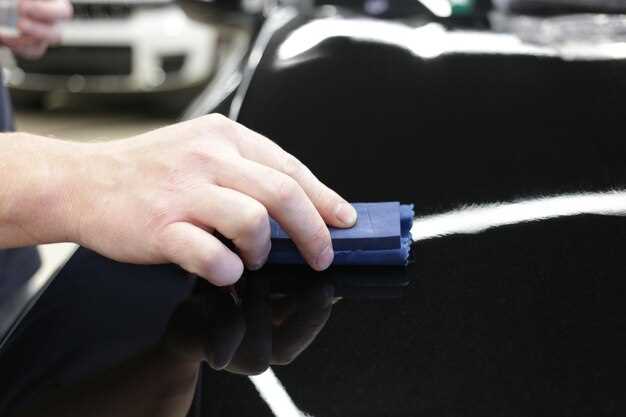
How to Clean and Protect Your Car’s Paint
- Arthur Rodriquez
- 0
- Posted on

Maintaining the pristine appearance of your car’s paint is essential for both aesthetic and resale value. Over time, various environmental factors such as dirt, grime, and UV rays can diminish the shine and integrity of the paint. Proper cleaning and protection not only enhance the visual appeal but also safeguard the surfaces from long-term damage.
In this article, we will explore effective tips for cleaning your car’s paint, ensuring it remains glossy and vibrant. From choosing the right cleaning products to implementing proper techniques, you’ll discover simple yet powerful methods to keep your vehicle looking its best.
Additionally, protecting your car’s paint is just as crucial as cleaning it. Using the right waxes and sealants can create a barrier against harmful elements. We will provide insights on how to apply these products effectively, prolonging the life of your car’s paint while making maintenance a breeze.
Best Techniques for Washing Your Car Without Damaging the Paint

Washing your car is essential for maintaining the integrity of its paint. To effectively clean without causing harm, start by using a two-bucket method. One bucket should contain soapy water, while the other is for rinsing your sponge or cloth. This technique helps prevent dirt from being transferred back onto the car’s surface.
Utilize a pH-balanced car shampoo to avoid stripping away any protective wax or sealant on the paint. Never use household cleaning products, as they can be too harsh and result in damage over time. Choose a microfiber wash mitt for its soft texture, reducing the risk of scratching the paint during the cleaning process.
When washing, work from the top down. Begin with the roof and proceed to the sides, hood, and trunk. This approach minimizes the chance of dirt and grime running down onto clean areas. Apply gentle pressure and use straight-line motions instead of circular patterns, which can create swirl marks.
Always rinse the car thoroughly before applying soap to remove loose debris. After washing, use a separate microfiber towel for drying. This will help prevent water spots and further protect the car’s paint. Regular maintenance, including washing every two weeks, can significantly extend the life of your car’s finish.
For extra protection, consider following up with a wax or sealant after washing. This will add a layer of defense against environmental factors and enhance the car’s shine. By adopting these best practices, you can effectively clean your car without compromising the quality of its paint.
How to Choose the Right Products for Paint Protection

Selecting the appropriate products for protecting your car’s paint can significantly enhance its appearance and longevity. Here are essential tips to guide you in making the right choices:
- Consider your car’s finish: Different finishes require specific products. Determine whether your car has a matte, gloss, or metallic finish before choosing protective products.
- Look for reputable brands: Research well-known brands that specialize in car care. Brands with good reviews often have quality products that offer reliable protection.
- Check product compatibility: Ensure that the cleaning and protection products you select are compatible with each other. Using incompatible products can lead to damage or ineffective protection.
- Read labels carefully: Examine labels for specific instructions and ingredients. Certain products may contain harsh chemicals that could harm your car’s paint.
In addition to considering the attributes of the products themselves, pay attention to the following:
- Type of protection: Decide between wax, sealants, or ceramic coatings. Wax offers a natural shine but needs frequent reapplication. Sealants provide longer-lasting protection, while ceramic coatings offer the highest level of durability.
- Application method: Some products are spray-on, while others may require polishing or buffing. Choose a method that you feel comfortable using.
- Environmental factors: If your car is exposed to harsh weather conditions, consider products that offer enhanced protection against UV rays, bird droppings, and tree sap.
By following these tips and carefully selecting cleaning and protection products, you can effectively maintain your car’s paint and keep it looking pristine for years to come.
Steps to Remove Common Contaminants from Your Car’s Surface
To keep your car’s paint in pristine condition, it’s essential to regularly remove common contaminants such as dirt, bird droppings, tree sap, and road tar. Here are some effective tips to help you achieve a clean surface.
1. Gather Your Supplies: Before you start cleaning, make sure you have all the necessary supplies ready. You will need a high-quality car shampoo, microfiber cloths, a clay bar, and a dedicated bug and tar remover. These items will help you effectively tackle various contaminants.
2. Rinse the Surface: Begin by rinsing your car with water to remove loose dirt and debris. This initial step will prevent scratching the paint during the cleaning process. Use a pressure washer or a hose with a nozzle for better water distribution.
3. Wash the Car: Apply the car shampoo using a microfiber cloth or a wash mitt. Start from the top and work your way down to avoid redistributing dirt back onto the clean areas. Make sure to rinse the mitt frequently to keep it free of grime.
4. Use a Clay Bar: To remove embedded contaminants, such as tree sap and industrial fallout, use a clay bar. Lubricate the surface with a clay bar lubricant, then gently glide the clay across the paint. This step will leave the surface smooth and ready for protection.
5. Target Stubborn Contaminants: For persistent issues like bug splatter or tar, apply a specialized bug and tar remover. Follow the product instructions, allowing it to sit for a few minutes before gently wiping it away with a microfiber cloth.
6. Final Rinse: After all contaminants have been addressed, perform a final rinse to remove any soap or cleaning residue. Ensure that all areas are thoroughly rinsed, including the wheel wells and undercarriage.
7. Dry the Surface: Use clean microfiber towels to dry your car completely. This prevents water spots and allows for better application of wax or sealant later on.
Regularly following these cleaning steps will not only enhance the appearance of your car but also extend the life of its paint. By proactively removing contaminants, you create a protective barrier that keeps your vehicle looking its best.